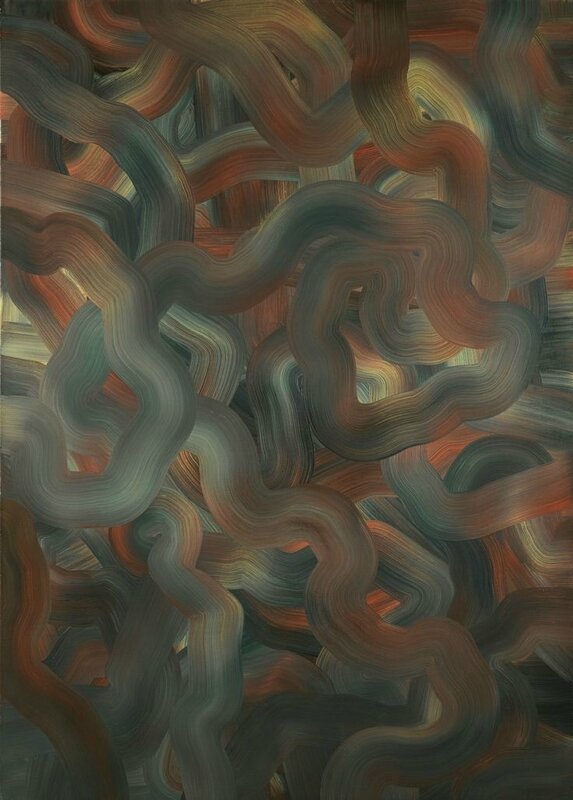Gerhard Richter (B.1932), Abstraktes Bild (Rot-Blau-Gelb)
Gerhard Richter (B.1932), Abstraktes Bild (Rot-Blau-Gelb). Photo Sotheby's
signed, numbered 336-2 and dated 73 on the reverse, oil on canvas, 175 by 125cm.; 68 7/8 by 49 1/4 in. Estimation 1,000,000 — 1,500,000 GBP
The present lot will be included in volume 2 of the forthcoming official catalogue raisonné of Gerhard Richter, edited by the Gerhard Richter Archive Dresden, as no. 336-2 to be published in 2015.
Provenance: Galerie Heiner Friedrich, Munich
André Goeminne, Nazareth
Acquired directly from the above by the present owner
Exposition: Paris, Musée National d'Art Moderne, Centre Georges Pompidou, Gerhard Richter, 1977
Litterature: Jürgen Harten, Karl-Heinz Hering, Dieter Honisch, Dietmar Elger, et al., Gerhard Richter: Bilder/Paintings 1962 – 1985, Cologne 1986, p. 161, (as no. 336-1), illustrated
Angelika Thill, et al., Gerhard Richter Catalogue Raisonné, 1962-1993, Ostfildern-Ruit 1993, Vol. III, no. 336-2, (incorrectly illustrated)
Composed of energetic sweeps of inter-mingled pigments Abstraktes Bild (Rot-Blau-Gelb) is a superb example of Gerhard Richter’s Vermalungen (Inpaintings), and reveals the artist’s aesthetic investigation into the painterly possibilities of the primary colours - red, blue and yellow - to stunning effect. Other Rot-Blau-Gelb examples are housed within the collections of major Germany museums including that of the Museum Kunst Palast and the Kunstsammlung, both in Düsseldorf, and the Kunsthalle Bremen. Prefiguring the quasi-mechanical yet painterly reproducibility imparted by the squeegee within the Abstrakte Bilder, Richter’s Rot-Blau-Gelb pioneered a kind of automatic motor-painting and form of non-intentional abstraction that would furnish his later great achievement.
Within the present work, the continuous movement of brush across canvas imparts a luscious painterly surface that belies the gestural and expressive propensities associated with the history of abstract painting. Comprising layers of uniquely chromatic striations that twist and turn in a smooth and endlessly convoluted dance, Rot-Blau-Gelb is formed from an unpredictable and quasi-mechanistic mixing of the primaries. Indeed, the Vermalung works were a radical breakthrough for Richter, anticipating the artist’s corpus of Abstrakte Bilder in their embrace of abstraction through endlessly deployed and destroyed layers of thick oil paint. Dietmar Elger argues that these paintings express the ultimate in aesthetic purity in their elemental state of ‘being’: “Richter… had now reached the point of defining his paintings exclusively as painting… The application of paint in the grey and the red-blue-yellow inpaintings is gestural without being expressive… Richter succeeded in taking the inpaintings to a threshold where they exist – period. There are no underlying or overriding themes, no justifications, hierarchies or declamations…” (Dietmar Elger, Gerhard Richter, A Life in Painting, Chicago 2009, p. 214).
Abstraktes Bild (Rot-Blau-Gelb) and other paintings within this series arose from the simplest of painterly beginnings that belie the complexity of the finished work. Richter would commence by placing circular areas of different coloured paints on the canvas, then proceed to move the brush almost mechanistically in broad sweeps between the colours, creating layer upon layer of rich texture. The artist would employ oil of cloves in order to counteract the drying process of the paints, allowing for an extended process of mixing the pigments. The resulting variations of tone are utterly unique within each work, ranging in hue from umber to richer shades of purple and red. Brighter traces of red dominate the present work, lending the overall palette a warm tone, whilst variations of blue and yellow provide a striking contrast. Richter spoke rhapsodically of the creative and essential equality of the primaries: “Three primary colours, as the source of endless sequences of tones… The shades and forms emerge through the constant blending of brushstrokes; they create an illusionistic space, without any need for me to invent forms or signs” (Gerhard Richter quoted in: ibid., p. 211).
Painted in 1973, Abstraktes Bild (Rot-Blau-Gelb) was created during a period of intense artistic experimentation, a time which Klaus Honnef referred to as “the break in style as a stylistic principle” (Klaus Honnef in: Exhibition Catalogue, Chicago, Museum of Contemporary Art, Gerhard Richter Paintings, 1988, p. 74). From the mid-1960s Richter became increasingly determined to find an alternative mode that he could pursue parallel to the photo-based paintings for which he had already achieved recognition. The sheer variety of Richter’s paintings during this period is truly astounding; not only did he continue to produce the Photo Paintings, as well as the immense Farben (Colour Chart) paintings, but he also produced a series of cityscapes based on aerial images, a few of which hover on the edge of complete abstraction. These years of frantic artistic experimentation can be said to have culminated with the production of the Vermalung works, a series which enabled Richter to give full rein to his creative impulses. The earliest examples were executed in greys, but by 1973 Richter was fully glorying in the potential of bold colours. Inspired by the core elemental nature of the three primary colours and a will to empty authorial intention from the practice of painting, the monumental Abstraktes Bild (Rot-Blau-Gelb) is a significant example of this important corpus.
Sotheby's. Contemporary Art Evening Auction. London | 12 févr. 2014 - www.sothebys.com

/https%3A%2F%2Fprofilepics.canalblog.com%2Fprofilepics%2F1%2F0%2F100183.jpg)
/https%3A%2F%2Fstorage.canalblog.com%2F03%2F02%2F119589%2F96711876_o.jpg)
/https%3A%2F%2Fstorage.canalblog.com%2F11%2F31%2F119589%2F94773502_o.jpg)
/https%3A%2F%2Fstorage.canalblog.com%2F20%2F83%2F119589%2F94772815_o.jpg)
/https%3A%2F%2Fstorage.canalblog.com%2F26%2F72%2F119589%2F75604929_o.jpg)
/https%3A%2F%2Fstorage.canalblog.com%2F59%2F60%2F119589%2F26458628_o.jpg)



/http%3A%2F%2Fstorage.canalblog.com%2F85%2F41%2F119589%2F129336877_o.jpg)
/http%3A%2F%2Fstorage.canalblog.com%2F49%2F31%2F119589%2F129152682_o.jpg)
/http%3A%2F%2Fstorage.canalblog.com%2F55%2F54%2F119589%2F128978735_o.jpg)
/http%3A%2F%2Fstorage.canalblog.com%2F25%2F57%2F119589%2F128085437_o.jpg)